By Shreya Suraj, nature enthusiast
As a part of the Madras Day celebrations, Nizhal along with Green TN Mission and Rotary District 3232, organised a Heritage Tree Walk on Aug.20. The walk started at the beautiful Indira Nagar park which is visited by hundreds of people but what they do not know is, Indira Nagar park houses some amazing heritage trees that are more than a hundred years old.
- At the entrance of the Indira Nagar park is a tall majestic tree, which is often mistaken as a mango tree from a distance. It is the Illapai Maram, also known as the Indian Butter Tree. Many temples have this tree as a Sthala Vriksham. This tree has a cluster of leaves which looks like a flower, while its flowers actually are pale white that bloom at night and have a sweet scent. The flowers, when dried, can be a replacement for sugar. Its fruit is fleshy and edible. The bark is pale brown. The tree can grow up to 20 feet and is a semi deciduous tree. Bats love its fruit and its seeds are dispersed by bats, highlighting the intricate dance of nature’s interconnectedness.

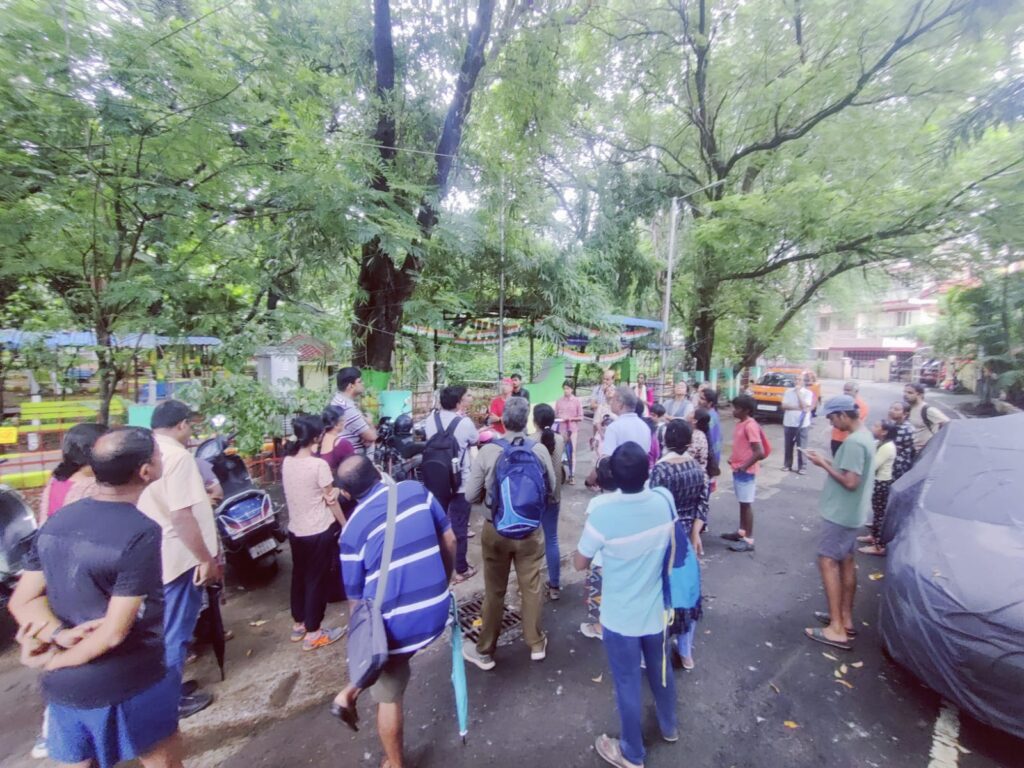
- Our next destination was the Andhra Mahila Sabha, home to a magnificent Baobab tree. This exotic wonder exhibits a truly captivating form and colouration. When viewed from a distance, its silhouette conjures the image of a steadfast elephant. Its robust trunk contains 79% water. The hollow trunk serves as a reservoir, adeptly storing water to brave arid times for African tribes in Africa. The contours and configuration of this tree deviate intriguingly from the norm, setting it apart in the botanical tapestry. The blooms that grace this tree are a pristine white, lending an air of elegance to its stature. But it’s the maturation of its fruit that truly captures attention – resembling dark rats with distinctive tails. Remarkably, these fruits have earned the affection of bats, their inherent sweetness forming an irresistible allure for these nocturnal creatures.
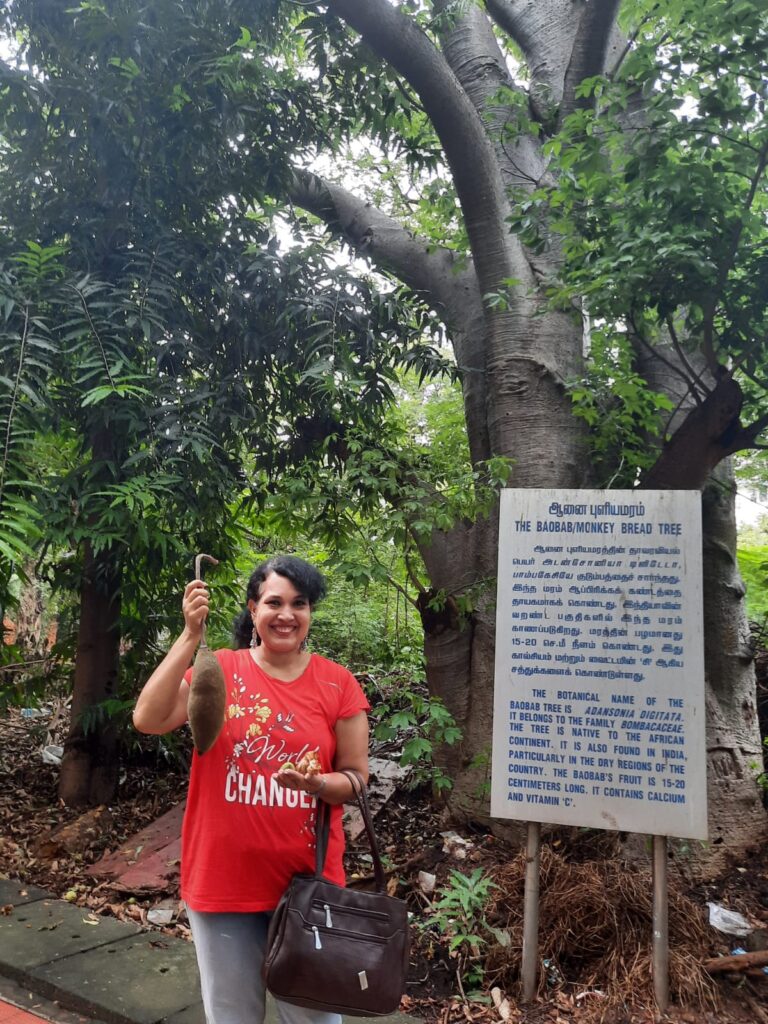
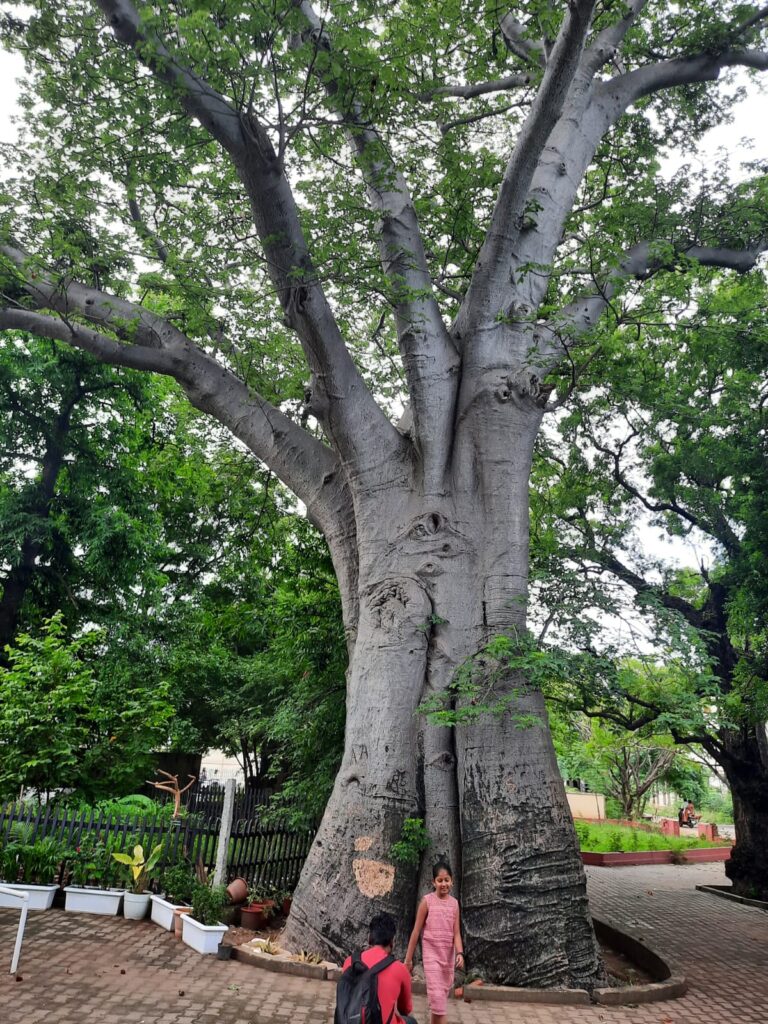

- The third destination was the beautiful Government Museum which houses a lot of history, culture as well as many historic trees. If the trees and bricks could talk, they would probably give a detailed version of Chennai’s history. Our journey began with the venerable Thaandri, which is also known as Vibeethaki – the tree renowned for dispelling fear. Adorning its branches are clusters of leaves, each one contributing to the canopy’s lush embrace. Come April, these trees undergo a remarkable transformation by shedding their leaves completely. The new and fresh foliage with vibrant shade of red can be mistaken for flowers. The delicate pale white blossoms they bear resembles Indian badam’s flowers. Their fruits hold within them a treasure trove of medicinal properties, particularly valued in Ayurvedic practices where they play a crucial role in crafting triphala. These trees hold a revered place in ‘Sithar Padal’, as they are believed to possess a superiority even greater than that of a mother – their presence thought to bolster a child’s immunity and safeguard their well-being.

- Our second spot at the Museum was the highly medicinal plant – Veppalai, known in English as Snowflakes tree, which grows in drought prone areas. It gives out a milky white liquid when the leaf is plucked. The leaves are the cure for skin diseases, mainly Psoriasis. The flowers are small and white and attract a lot of bees and butterflies. Their seeds are being eaten as rice ‘veppalai rice’.
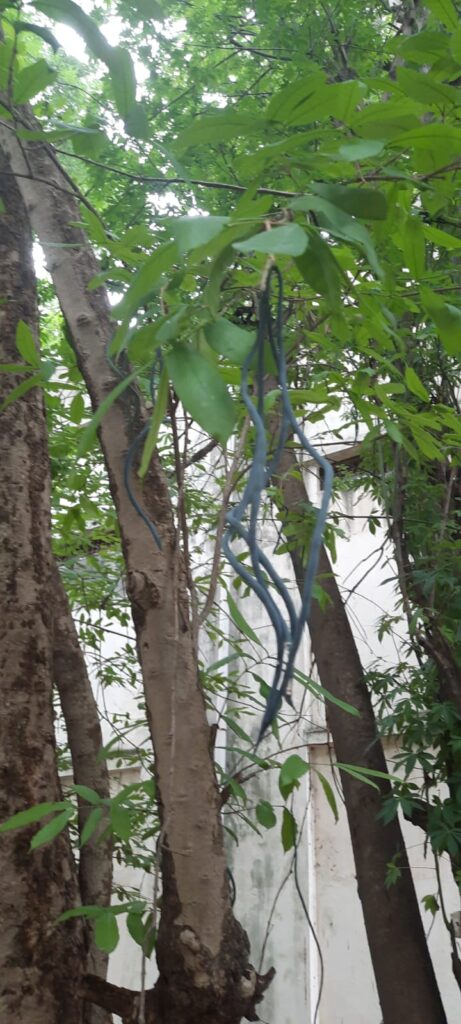
- We also saw the majestically tall huge Timber tree, known in Tamil as Nunnera, Button tree in English. It is an indigenous tree and it has dense hard roots. It also has lots of medicinal uses. It is a hardwood tree and is used for making furniture. It requires very little maintenance and a potential species for afforestation in arid lands.
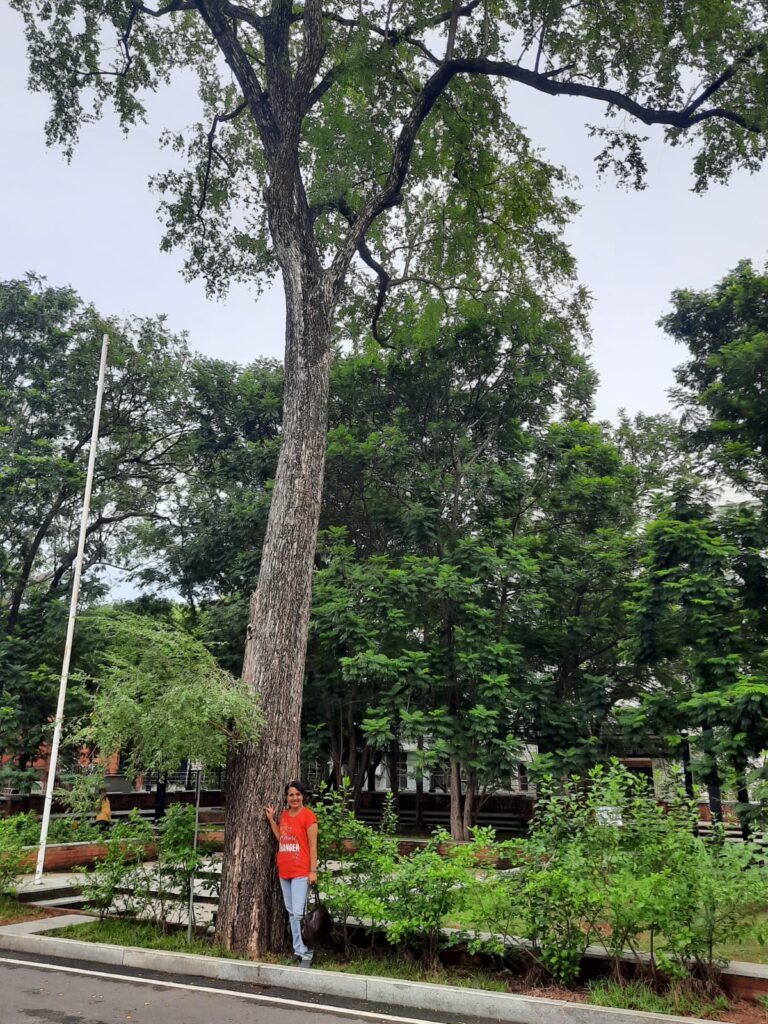
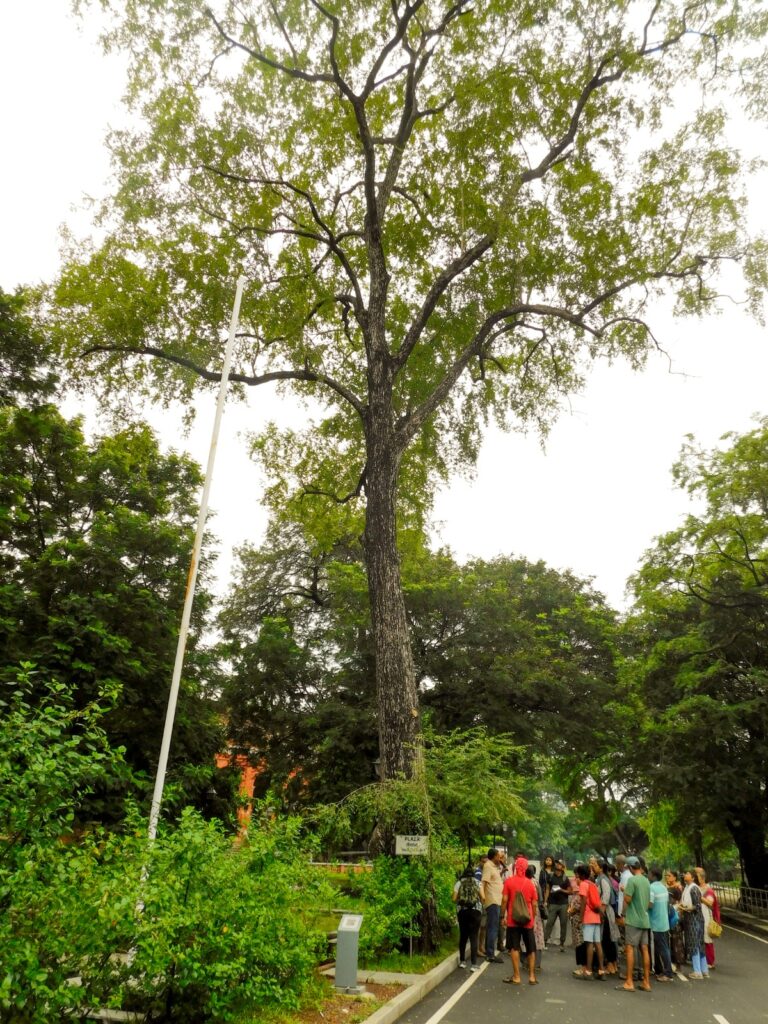
- The historical May Day Park in Chintadripet too houses many heritage trees. The Putranjeeva tree thrives here. It is known as the Child life tree. This species has male and female trees separately (sexual dimorphism) as seen in our palmyra palm. They cannot be distinguished unless they flower and bear fruits or unless the farmers have traditional knowledge. This tree came into limelight because this tree was on debate in the parliament in 2015, as the product from this tree was being prescribed as assuring male children to the females. Later it was clarified that the product name was misinterpreted and it only treats female infertility. The leaves hang gracefully from the tree and the fruits have high medicinal value.


- Taking centre stage in the May Day Park is the revered Neer Kadambai, a captivating freshwater mangrove species. Distinguished by its unique life cycle, the tree’s fruits delicately dangle from its branches. The seeds themselves embark on an extraordinary journey, initiating their growth while still nestled in the embrace of the tree. Once fully matured, they gracefully descend into a watery expanse, typically a coastal wetland. There, they fulfil their destiny by germinating into new, vibrant plants, perpetuating the cycle of life. These plants have beautiful red flowers which add to the beauty of this tree.
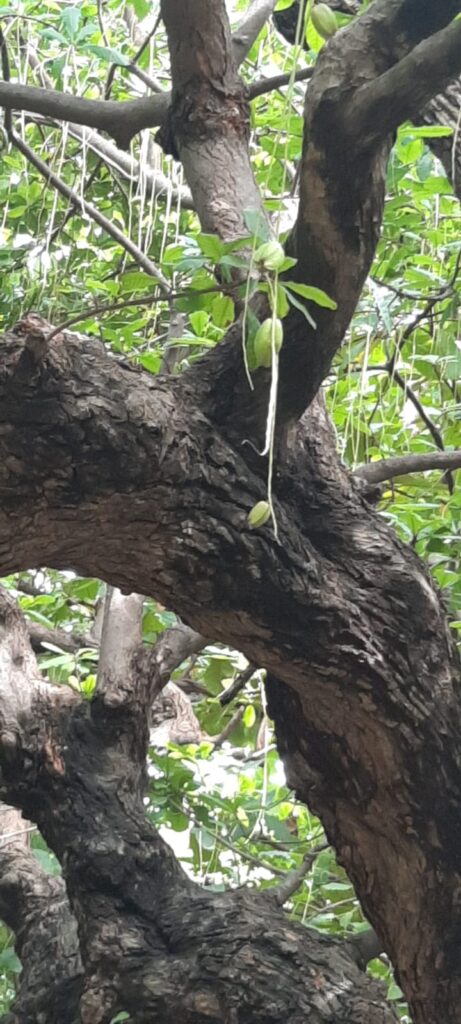
- The majestic Banyan tree is a popular landmark in the Government Hospital, Omandurar Estate. It is the national tree of India. Its name was derived from Gujrathi traders or Baniyas who used to conduct their business under the Banyan tree. The tree has a wide girth and has unique prop roots. The interesting part of a banyan tree are the pollinators- the tiny wasp which are so small that it can go through the eye of the needle. The fig wasp enters the tree and lays its eggs. The male eggs hatch first and fertilise the female egg. It makes the exit hole bigger and die. The female eggs hatch and within a span of hours find another banyan tree to repeat the process. There is no specific fruiting or flowering season.

- We even met the first cousin of the Taandri tree, popularly known as Arjuna Maram or Neer Maradhu, deriving its name from Arjuna of Mahabharata who was famous for his white clothes. The bark of this tree is white. The trees are very tall and have green leaves which will turn yellow around January and then bright brilliant red. Then the flowers and fruits will emerge around April. The bark of the tree is good for heart ailments. It is a tree which needs a lot of space to grow but unfortunately this tree is enclosed in a concrete enclosure.

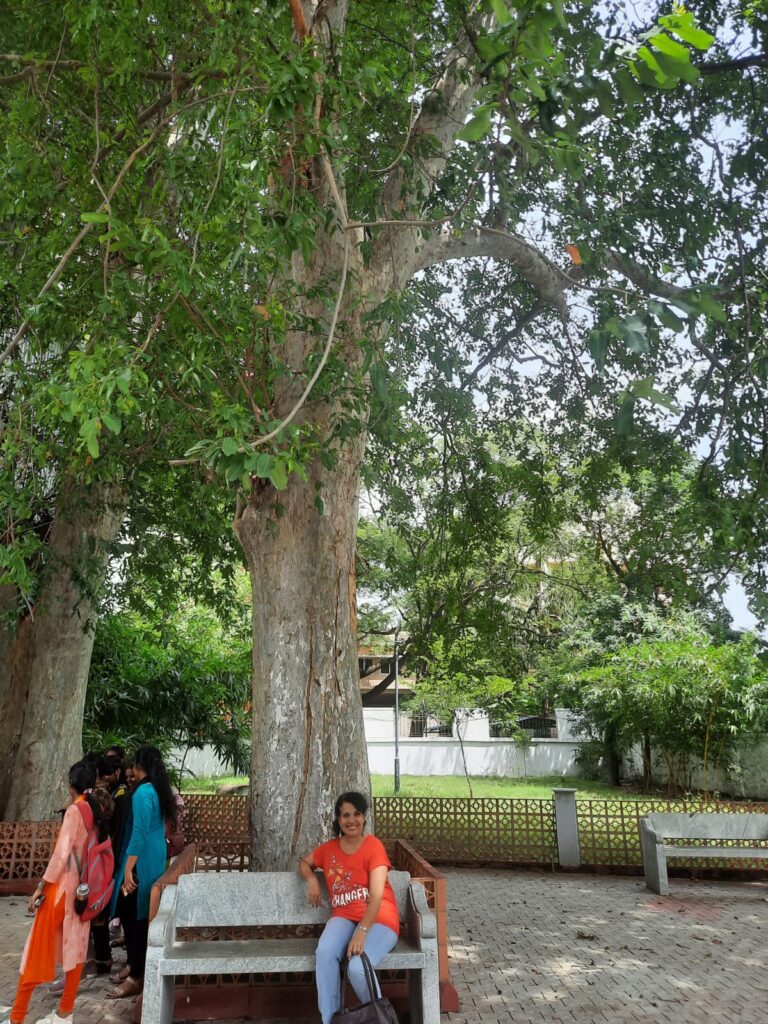
- The last destination was the Queen Mary’s College. It houses the exotic Lignum Vitae also known as Tree of Life-National flower of Jamaica. It has the densest wood and the bark looks like a leopard’s skin. It has a beautiful foliage; flowers are blue in colour and filled with blue tiger butterflies during the flowering season. The fruits are orange in colour. It is used as a shaft in the ship’s propeller, as it does not rot in the water.

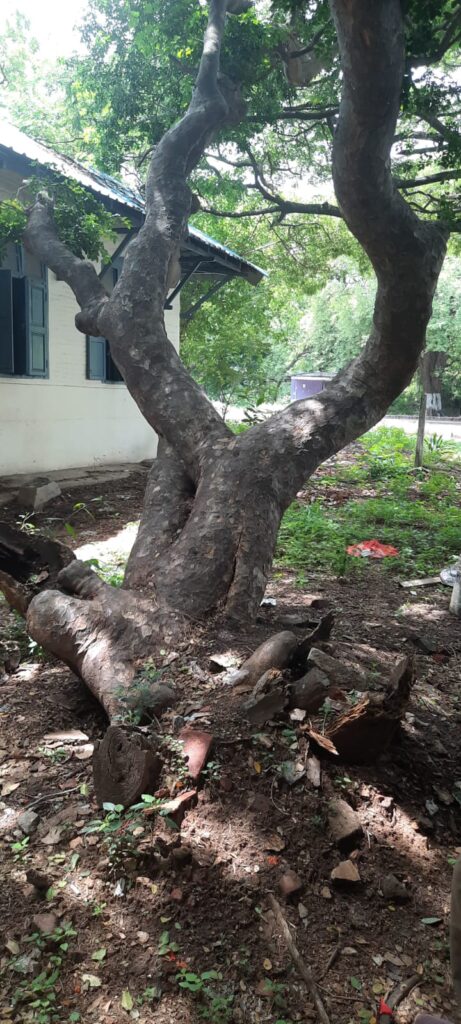
I thoroughly enjoyed my participation in the Heritage Tree Tour, a wonderful event co-organized by Nizhal and Green TamilNadu Mission. This immersive experience provided valuable insights into the historical significance of trees, their native environments, and diverse attributes such as flowers, fruits, leaves, propagation methods, and even medicinal properties. The guided tour, skilfully led by Ms.Sowdamini, Ms.Chitra and Dr.T.D.Babu proved to be both enlightening and engaging.
The journey, spanning four hours, passed by in a flash due to the captivating nature of the experience. Learning about the rich stories behind each tree and its connection to Chennai’s past was truly fascinating. The organisers’ meticulous curation ensured a seamless and informative adventure, making the event not only educational but also enjoyable.
The logistics for the event was arranged by the Green TN Mission and breakfast was courtesy the Rotary District 3232.
Shreya Suraj is a nature enthusiast and a civic activist. She can be reached at [email protected].
For more on Green TN Mission, check out their website: http://www.greentnmission.com. Tree Helpline: 1800-599-7634 – reach this number to report tree felling and help.
Nizhal is a Kotturpuram based NGO that is committed to preserving trees and greening the city. To get expert advice from Nizal or to volunteer with them, reach them at 98409 04621, 98841 14721, 94450 28067, 98414 49829; email: [email protected]; website: www.nizhaltn.org.












